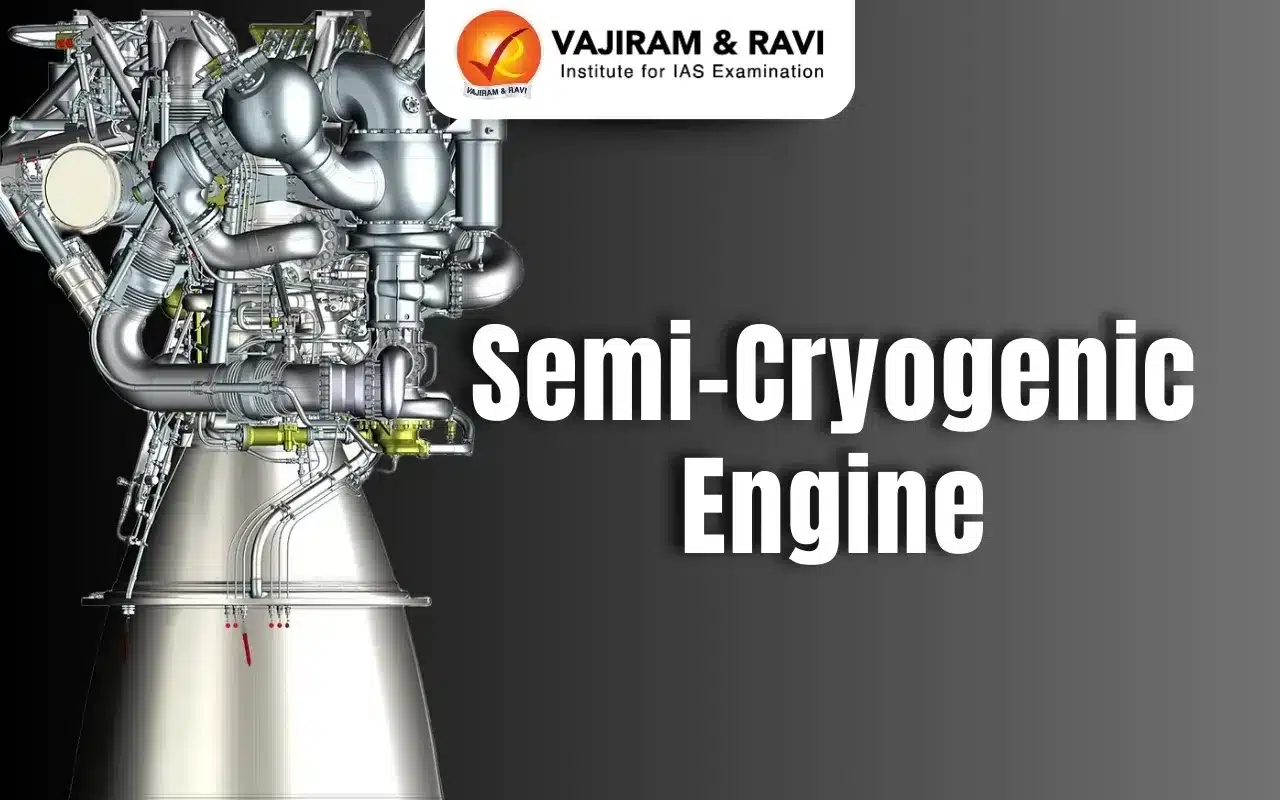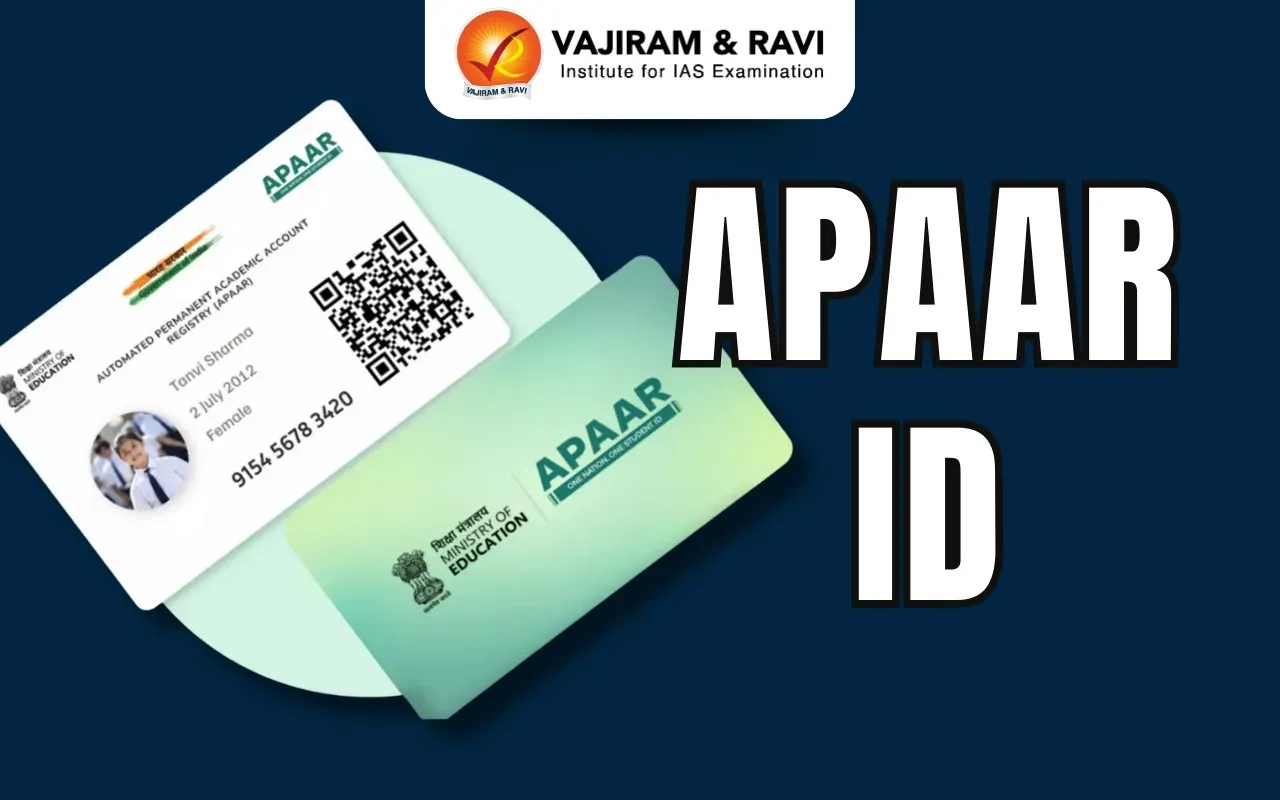Semi-Cryogenic Engine Latest News
ISRO recently successfully conducted the hot test on a semi-cryogenic engine (SE2000), coming closer to finalising the crucial cryogenic stage.
About Semi-Cryogenic Engine
- A semi-cryogenic engine (SCE) is a liquid rocket engine that uses liquid oxygen (LOX) as an oxidizer and refined kerosene as fuel.
- The Indian Space Research Organisation (ISRO) is developing a semi-cryogenic engine with a thrust of 2000 kN to power the booster stages of future heavy-lift launch vehicles. This engine utilizes a combination of liquid oxygen (LOX) and refined kerosene (RP-1) as propellants.
- The semi-cryogenic engine offers several advantages over traditional cryogenic engines, including:
- Higher Density Impulse: The LOX-kerosene combination provides a higher density impulse compared to LOX-liquid hydrogen, resulting in improved performance.
- Cost-Effectiveness: Kerosene is more cost-effective and easier to handle than liquid hydrogen, reducing overall mission costs.
- Operational Efficiency: Kerosene can be stored at ambient temperatures, simplifying storage and handling requirements.
- The development of this engine is expected to enhance the payload capacity of ISRO’s existing launch vehicles, such as the LVM3, and is also planned for use in future launch vehicles like the Next Generation Launch Vehicle (NGLV).
Difference Between Semi-Cryogenic Engine and Cryogenic Engine
- Unlike a cryogenic engine, a semi-cryogenic engine uses refined kerosene instead of liquid hydrogen. The liquid oxygen is used as an oxidiser.
- “The advantage of using a semi-cryogenic engine is that it requires refined kerosene, which is lighter than liquid fuel and can be stored at a normal temperature.
Semi-Cryogenic Engine FAQs
Q1: What is a semi-cryo engine?
Ans: A semi-cryogenic engine is an advanced rocket propulsion system that uses liquid oxygen as an oxidizer and refined kerosene as fuel, offering higher thrust and improved payload capacity for space launches.
Q2. What is the difference between cryogenic and semi-cryogenic?
Ans: Cryogenic engines use liquid hydrogen and liquid oxygen, both stored at extremely low temperatures. Semi-cryogenic engines use refined kerosene (stored at room temperature) and liquid oxygen, simplifying fuel handling and increasing density.
Q3. What is the fuel in a semi-cryogenic engine?
Ans: The fuel used in a semi-cryogenic engine is refined kerosene, also known as RP-1 (Rocket Propellant-1). It is combined with liquid oxygen as the oxidizer to produce thrust.
Source: IE
Last updated on December, 2025
→ Check out the latest UPSC Syllabus 2026 here.
→ Join Vajiram & Ravi’s Interview Guidance Programme for expert help to crack your final UPSC stage.
→ UPSC Mains Result 2025 is now out.
→ UPSC Notification 2026 is scheduled to be released on January 14, 2026.
→ UPSC Calendar 2026 is released on 15th May, 2025.
→ The UPSC Vacancy 2025 were released 1129, out of which 979 were for UPSC CSE and remaining 150 are for UPSC IFoS.
→ UPSC Prelims 2026 will be conducted on 24th May, 2026 & UPSC Mains 2026 will be conducted on 21st August 2026.
→ The UPSC Selection Process is of 3 stages-Prelims, Mains and Interview.
→ UPSC Result 2024 is released with latest UPSC Marksheet 2024. Check Now!
→ UPSC Prelims Result 2025 is out now for the CSE held on 25 May 2025.
→ UPSC Toppers List 2024 is released now. Shakti Dubey is UPSC AIR 1 2024 Topper.
→ UPSC Prelims Question Paper 2025 and Unofficial Prelims Answer Key 2025 are available now.
→ UPSC Mains Question Paper 2025 is out for Essay, GS 1, 2, 3 & GS 4.
→ UPSC Mains Indian Language Question Paper 2025 is now out.
→ UPSC Mains Optional Question Paper 2025 is now out.
→ Also check Best IAS Coaching in Delhi

















